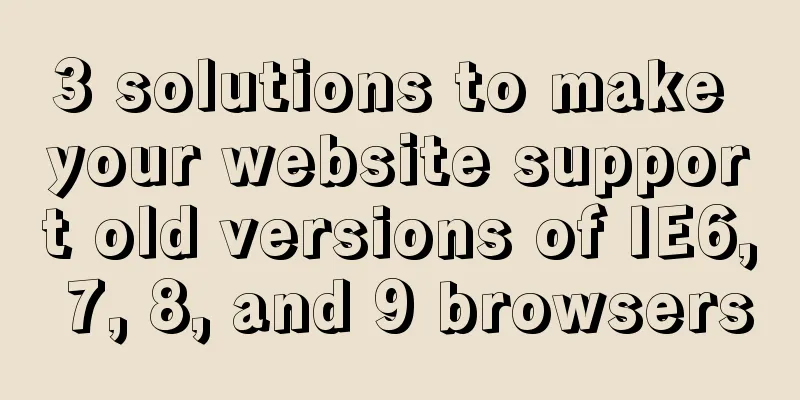A brief talk on responsive design

|
1. What is responsive design? Responsive design is to perform corresponding operations and layouts according to user operations and device environments during the website development process, so that the website can be intelligently adjusted for different system platforms, screen sizes, screen orientations, etc., and corresponding layouts can be made. For example, on PC, iPhone, Android, iPad, it achieves smooth browsing effects on a variety of smart mobile terminals such as smartphones and tablets, prevents page deformation, and can automatically switch page resolution, image size and related script functions to adapt to different devices. It can also synchronize website data updates on any browsing terminal, providing users of different terminals with a more comfortable interface and a better user experience. 2. What are the advantages of responsiveness? Responsive design is highly flexible in dealing with devices with different resolutions, and can quickly solve the problem of multi-device display adaptation. It is compatible with multiple smart mobile browsing terminals and automatically adapts to their screen sizes. It has a unified style and increases the website's recognition. In addition, the background and database used by responsive websites are unified. That is, after editing the website content on the PC, smart mobile browsing terminals such as mobile phones and PADs can synchronously display the modified content, and the management of website data can be more timely and convenient. Improving the technical quality of the website and providing users with a friendly web interface can better tap into potential customer groups and bring more traffic to the website. 3.What are the principles and techniques of responsiveness? ①. Meta tag definition: Located in the head of the document, it does not contain any content. The meta tag is very important for website development. It can be used to identify the author, set the page format, mark the content summary and keywords, refresh the page, etc. It responds to the browser with some useful information to help display the web page content correctly and accurately. ②. Use Media query to adapt the corresponding style: define style sheet rules through different media types and conditions. The obtained values can set the device's holding direction, horizontal or vertical orientation (portrait|lanscape), device resolution, etc.; grammatical structure and usage: @media device name only (selection condition) not (selection condition) and (device selection condition). ③. Responsive processing of tables: The table will automatically change with the changes of the web page or device. Utilize tr (rows and columns), td (vertical columns), colspan (horizontal merge), rowspan (vertical merge) to complete the page layout and realize responsive design. ④. Third-party framework bootstrap: reference the bootstrap plug-in to achieve responsive design of web pages more quickly. The above brief discussion on responsive design is all the content that the editor shares with you. I hope it can give you a reference. I also hope that you will support 123WORDPRESS.COM. Original URL: http://www.cnblogs.com/duzheqiang/p/5663202.html |
<<: MySQL cursor detailed introduction
>>: Two ways to clear float in HTML
Recommend
How to use VIM editor in Linux
As a powerful editor with rich options, Vim is lo...
SQL implementation of LeetCode (184. The highest salary in the department)
[LeetCode] 184. Department Highest Salary The Emp...
How to process blob data in MySQL
The specific code is as follows: package epoint.m...
Add ?v= version number after js or css to prevent browser caching
Copy code The code is as follows: <span style=...
The space is displayed differently in IE, Firefox, and Chrome browsers
The display effects on IE, Fir...
Detailed explanation of the process of deploying SpringBoot project through Docker plug-in in IDEA
1. Configure Docker remote connection port Locate...
How to point the target link of a tag to iframe
Copy code The code is as follows: <iframe id=&...
Universal solution for MySQL failure to start under Windows system
MySQL startup error Before installing MySQL on Wi...
JavaScript to achieve text expansion and collapse effect
The implementation of expanding and collapsing li...
How to compile and install opencv under ubuntu
Easy installation of opencv2: conda install --cha...
How to prevent hyperlinks from jumping when using a link
When using <a href="" onclick="&...
IE6 distortion problem
question: <input type="hidden" name=...
The iframe refresh method is more convenient
How to refresh iframe 1. To refresh, you can use j...
Mysql specifies the date range extraction method
In the process of database operation, it is inevi...
Map the mouse position in CSS and control the page elements by moving the mouse (example code)
Mapping the mouse position or implementing drag e...









